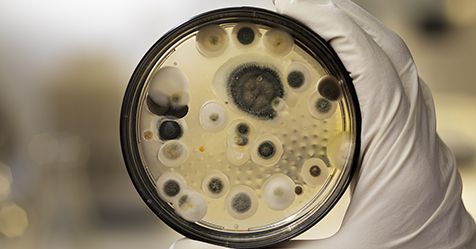Going “green” used to be more of an environmental movement, one started to protect the fragile state of Earth”s atmosphere and raise awareness when it came to what our choices were doing to the air we breathe and the water we drink.
Somewhere along the way, consumers and producers alike began to realize that simple awareness wouldn”t be enough to stop and perhaps reverse the damage done to our planet.
Out of awareness grew the need and the desire to change the way products were made, sold and how much of an impact they left behind.
Today, we can see the green movement in almost every aspect of our lives, from cleaner fuel in automobiles to less plastic in our water bottles.
The green movement has filtered down to the very products we use to clean.
With the consumer becoming more and more eco-conscious, it seems almost natural that more and more “green” products are popping up on the market.
But, not all things are created equally.
While the consumer puts their faith in words like “all-natural,” “eco-friendly” and “Earth friendly,” in a lot of cases, they”re the victims of the all-too-common practice of “greenwashing.”
What Is Greenwashing?
Greenwashing occurs when a product or company uses environmental terms in a loose and unsubstantiated manner.
While the state of the environment is a real problem that concerns us all, there are companies trying to jump on the environmentally preferred bandwagon.
Oftentimes, in order to increase revenues, a company will simply rebrand their product without making any fundamental changes.
The formulas, processing protocols, packaging and shipping — all pieces to the environmentally friendly puzzle — stay the same; the only thing that changes are the claims on the label.
They sound promising, but none of the common phrases are controlled by any type of regulatory body, such as the Federal Trade Commission (FTC) or the U.S. Environmental Protection Agency (EPA).
“When a company or product purposefully uses vague and loose terminology, they are, in a sense, brainwashing the consumer to think something is green without giving any substantiation,” says Sue Kramer, marketing manager for Clorox Professional.
Such sweeping terminology might sound good, but lacks the facts and figures to back up such claims.
Avoiding Green Fever
If going green is the latest trend and everyone is doing it, how can the consumer be sure they are getting the real deal?
Is it the responsibility of the manufacturer?
Some would say yes; others would argue that the consumer should put forth the effort to know if something is truly green or not.
In reality, the responsibility does not lie with one or the other, but both.
“There is a dual responsibility, of both the end-user and the manufacturer, to stop the trend of greenwashing,” says Kramer.
The consumer”s responsibility is to look beyond the green package and the leaf symbol, past the claim of “all-natural” and to do the research.
There is a vast array of information available to the consumer, and it is in the consumer”s best interest to utilize the resources available to them.
There are numerous third-party certifications that take the time and energy to thoroughly research the ingredients that make up the cleaning products that are finding their way into the arsenal of the end-user.
These certifications, such as the EPA”s Design for the Environment (DfE), TerraChoice Environmental Marketing”s EcoLogo Program and Green Seal Inc., independently certify that a product is good for the environment.
Third-party certification of products holds more weight because they are not backed by a single player.
What all of the more prevalent certifications have in common is the goal to see more environmentally friendly products on the market and in the hands of end-users.
But, all the hardwork and research cannot be left up to the consumer; it is the responsibility of the manufacturer to be more transparent in order to avoid misleading the consumer.
Communication between the manufacturer and the end-user is key.
It is, after all, in the power of the end-user to determine whether or not your “green” product makes the grade.
If it”s too difficult to figure out whether a product”s claims are legitimate or not, the consumer will most likely defer to another product.
If the manufacturer puts out a product that makes broad, sweeping claims about how it”s “all-natural,” the well informed consumer will not fall for such a ploy.
Manufacturers should list every ingredient that goes into their products.
If there is something to hide, there is something not so green going on inside the bottle.
On The Rise
Unfortunately, even with all of the tools consumers can arm themselves with in order to avoid greenwashing, it is still happening, and more often than would be suspected.
While education and awareness of the problem are on the rise, so, too, is the desire to be perceived green.
Being seen as “green” and good for the environment is a trap that both consumers and manufacturers alike can fall into.
Products with phrases like “all-natural” and “green” are popular and are often picked by consumers because they give the immediate satisfaction that something good is being done for the environment, regardless of that fact that, in the majority of cases, this is false.
On the bright side, professional consumers are becoming savvier when choosing what products to use in their facilities, doing the research and asking the manufacture about not only a product”s ingredients, but the entire lifecycle of the product, including shipping methods and packaging.
Much of this increase in awareness can be attributed to the increase in certifications such as the U.S. Green Building Council”s (USGBC) Leadership in Energy and Environmental Design (LEED) certification and ISSA”s Cleaning Management Industry Standard (CIMS), both of which require facilities to use third-party certified green products in order to maintain certification.
“No one is there yet, but there is an obvious push towards being a better environmental citizen,” says Kramer.
Greenwashing is not a myth.
In many cases, consumers may not understand that simply because a product proclaims itself good for the environment doesn”t necessarily mean it actually is.
Consumers and manufacturers alike have a responsibility to use products that can actually make a difference.



